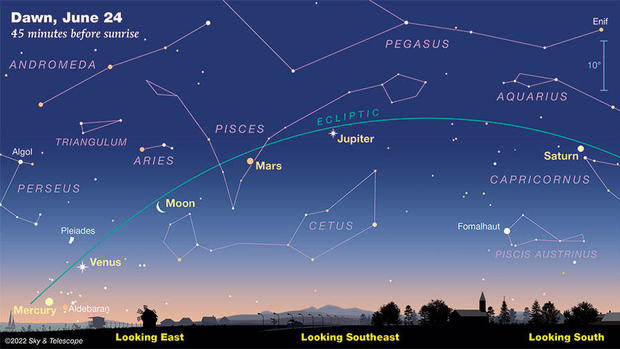This week, Earth will be able to observe an unique alignment of five planets. For the first time since December 2004, Mercury, Venus, Mars, Jupiter, and Saturn are aligning, in that order. The phenomenon will be easiest to see for observers on Friday, June 24.
Three planets coming together closely is a normal occurrence, but seeing five is unusual, according to Sky & Telescope. The alignment of the planets in relation to the Sun in their natural order is likewise exceptional, according to the American Astronomical Society’s science journal.
Beginning on June 3 and 4, the five so-called “naked-eye” planets were visible. The quintet could be viewed with binoculars for about 30 minutes until Mercury was obscured by the sun’s glare.
However, viewing will be best on June 24. According to Diana Hannikainen, observing editor of Sky & Telescope, it is becoming increasingly simple to see all five planets, even if the distance between Mercury and Saturn is expanding.
The fading crescent moon will also join the journey between Venus and Mars, according to Hannikainen, thus the sky on the morning of the 24th “will present a magnificent spectacle.”
According to NASA, four of the planets that can be seen with the naked eye have been aligning in the past several months. Saturn, Mars, Jupiter, and Venus, however, will disperse during the coming months. Most observers won’t be able to see Venus or Saturn after September.
The M13 globular star cluster, a closely packed spherical collection of stars, will be another astronomical event that can be seen in June. Numerous stars in the M13, often referred to as the Hercules Cluster, are considered to be roughly 12 billion years old, or nearly as old as the universe itself, according to NASA.





















